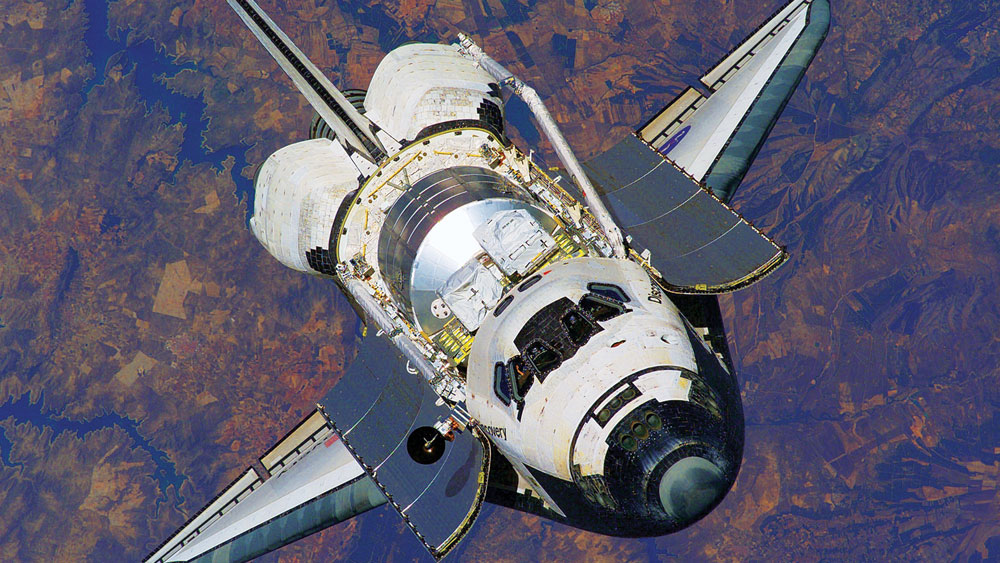Paul Burd
Contributor
The space shuttle Discovery glided down from orbit to a picture-perfect landing at the Kennedy Space Centre March 9, marking the completion of her last mission and heralding in the final months of NASA’s space shuttle program.
The first shuttle to be retired from service, Discovery is ending a career as the workhorse of the space shuttle fleet. Having completed a record 39 missions over 27 years, Discovery is the first manned space vehicle to spend a cumulative 365 days in orbit. This full year in space has been spent bringing hundreds of important science experiments and projects into orbit, including the Hubble Space Telescope and many components of the International Space Station (ISS).
Discovery was also entrusted with the sensitive “Return-to-Flight” missions following the disastrous losses of the shuttles Challenger and Columbia.
Underlying NASA’s lauding of Discovery’s legacy, though, is the knowledge that her retirement is the beginning of the closing chapter in the space shuttle era. Beginning with the launch of the shuttle Columbia in 1981, the nearly 30-year space shuttle program will come to an end after the June launch of Atlantis.

Paul Delaney, a senior lecturer and director of York University’s observatory, argues that the versatility of the space shuttle over this period carries a lesson for future exploration. “The shuttle program as a whole has shown that we can go into and out of Earth orbit more or less at the drop of a hat,” he said.
If the shuttle has bolstered our confidence that we can go into orbit, its substantial contribution to the ISS has shown that we can stay in space. “You would never have been able to build the ISS without the commitment of the shuttle program,” says Delaney.
However, after nearly three decades of regular flights and the tragic loss of two shuttle crews, NASA has decided that the shuttle program has run its course. Once they are all retired, the remaining space shuttles will be displayed in a few museums and institutions clamouring for a piece of space history.
Charting a course for the post-shuttle era will begin with NASA in the unfamiliar position of lacking a space vehicle for its own astronauts. Until an alternative is developed, American astronauts will be hitching rides aboard Russia’s Soyuz capsules in a curious rivals-turned-patrons turn of history. This looming dearth of new space vehicles and reliance on foreign space programs has sparked a debate in the United States about the future of NASA’s human space exploration.
Under the space policy announced by then-president Bush in 2004, NASA was directed to develop a new rocket and crew capsule that would serve as the successor to the space shuttle. The goal of this project, called the Constellation Program, was to return astronauts to the moon by 2020 and prepare for an eventual mission to Mars.
In a move that ruffled feathers in Congress and NASA at the time, President Obama announced his own vision of NASA’s future in a major space policy speech at the Kennedy Space Centre this past April. This new space plan calls for investment in private industry to shoulder the development of vehicles that would ferry astronauts and equipment into low Earth orbit.
Once such private space services are developed, the U.S. is betting NASA could rent space aboard these ships at a fraction of the shuttle program cost. If successful, this plan would then allow NASA to shift its transport spending to the development of space technologies that would enable them to reach distant asteroids and eventually Mars. “By 2025, we expect new spacecraft designed for long journeys to allow us to begin the first-ever crewed missions beyond the moon into deep space,” said President Obama in his speech.
It remains to be seen, however, whether Obama’s bet on the innovative capacity of private industry will produce a safe and reliable alternative to the shuttle program. An even more uncertain proposition is whether the post-shuttle NASA will receive the funding boost needed to mount the most ambitious space exploration missions since Apollo.
Asked about the likelihood of a future asteroid and Mars mission, Delaney insists NASA can lead this charge if given the proper support: “It requires political will and capital every bit as much as the technical prowess and the technical capabilities to get there.”
On the time scale envisioned for these new explorations, summoning the pioneering spirit of the Kennedy era will fall to a future generation of political leaders. NASA is hoping, though, that such support will be forthcoming if it accomplishes its present mission of following up the space shuttle legacy with an innovative groundwork for missions far beyond Earth orbit.
Star cruiser now hangar-bound


